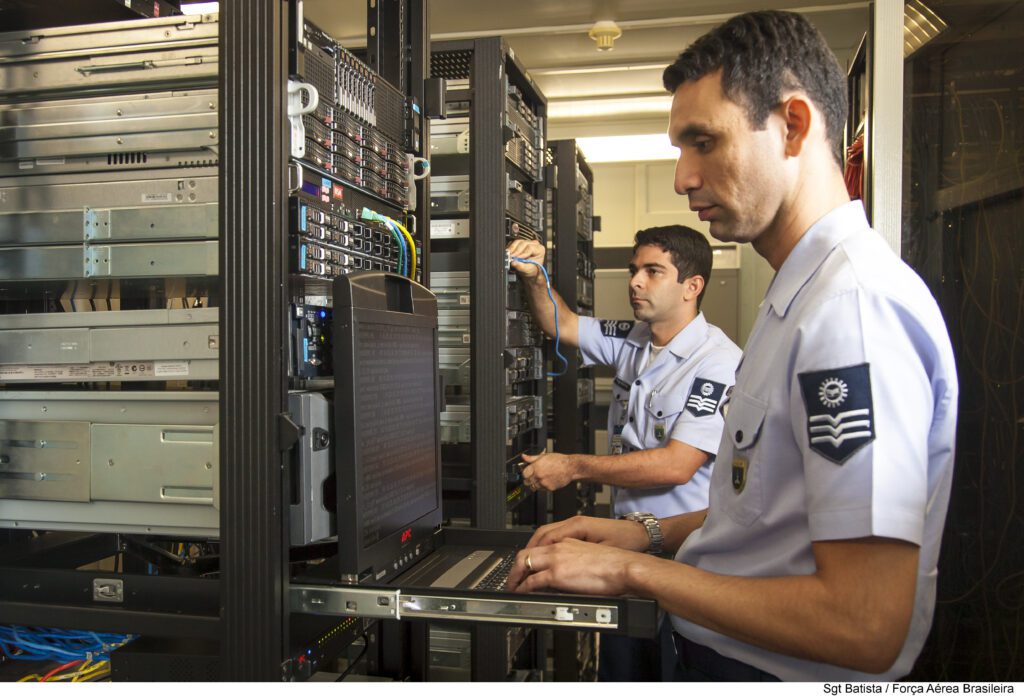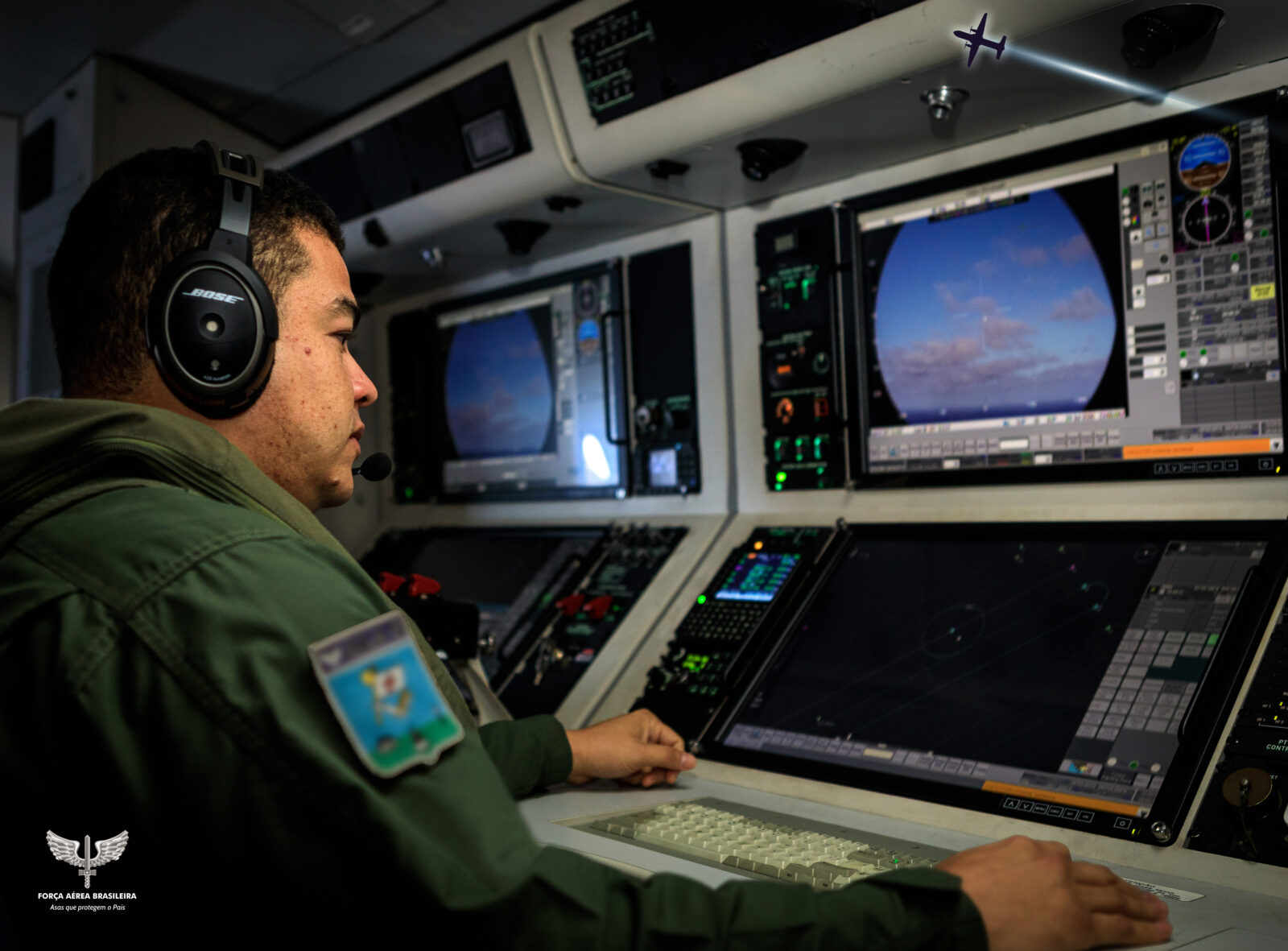Air Force information technology celebrates 40 years of creation
Air Force Agency, by Lieutenant Gabrielle Varela
Information Technology has reached every space in the world today and the Brazilian Air Force (FAB) is no different. For 40 years, the institution has had a specific sector for the area: created on December 1, 1983, it was initially designated as the Center for Information Technology and Statistics of the Ministry of Aeronautics (CINFE).
It is currently coordinated by the Aeronautics Information Technology Directorate (DTI), which operates in the following areas: the traditional corporate or administrative area, present in most corporations through various systems and applications that support financial, personnel and document management; and the operational area, aimed at supporting the FAB’s core business, such as logistics support, cyber protection and command and control, as well as other functions. It is also responsible for the development and support of Corporate Systems and Flight Simulators, as well as Information Security, and is present in all areas where the Air Force Command operates.
According to the Director of Air Force Technology, Major General Engineer Eliezer de Freitas Cabral, IT plays an important role in boosting operational efficiency, strengthening cyber defense and enabling innovations that guarantee the efficiency and effectiveness of corporate systems. “It also provides tools for decision support. Thus, I recognize and highlight the dedication and commitment of all Information and Communication Technology (ICT) professionals in the performance of their institutional activities,” said the General Officer.

Deliverables
The DTI highlights recent deliveries related to operational activity, such as the Command and Control systems: DEA 2, SPCOA, HÉRCULES 2 and SAGEM, which have speeded up the preparation and use of air and ground resources, both in routine activities and in exercises and operations.
In the administrative area, we highlight the delivery of new modules for the Military Portal, the evolution of AGHUse (Health System) and SIGADAER 7 (document management system), which will be implemented in 2024. These deliveries make it possible to centralize information, such as electronic medical records.
For decision support, dashboards such as GOA and IOP v3 have provided management indicators aimed at preparing the Force, helping with rapid decision-making and course adjustments.
With a view to preparing the institution, the flight simulators for the C-95M and T-27 aircraft have enabled pilots to adapt to the aircraft without incurring high logistical costs, which has increased flight safety and provided the FAB itself with the opportunity to develop knowledge in this area.
Professionals
Military personnel in the Information Technology (IT) area have fundamental functions for the Brazilian Air Force, carrying out all of the institution’s monitoring and network structure, as well as developing projects.
Systems Analyst Captain Yuri Petit Lobão Ferreira Tourinho is a Deputy in the IT Project Monitoring Division. He has worked in the institution for over 8 years and has been able to observe the technological evolution of the FAB. “Working in the Computer Center, I experienced the change from the Waterfall development paradigm to the Agile Methodology, which allowed us to deliver value to the user earlier and earlier. Today, they can use, test and contribute to its evolution in just a few months. Working in the Information Technology Directorate, I see strategic thinking applied to project management, both in the planning and execution phases, and to IT governance,” he explained.
For the Captain, achieving good results depends on investing in courses and technologies so that the techniques and tools used are the most appropriate. “The Aeronautics Computing Centers are at the forefront when compared to many companies in the technology field. In other words, we see in DTI the development and application of a soft skill – a fundamental ability to be able to solve challenges efficiently in a constantly evolving and changing IT scenario,” he concludes.

Structure
The Aeronautics Command has three Computing Centers, based in Brasília, São José dos Campos and Rio de Janeiro. Each one has a specific ‘DNA’, according to the characteristics of its main activities, with a central focus on information management, involving databases, networks, hardware and software engineering, computing and analysis.
The Aeronautics Computing Center in Brasilia (CCA-BR) is responsible for managing the cyber security of the FAB’s data network in coordination with the other links in the ITS, in order to maintain the permanent availability, integrity and confidentiality of hardware and software assets for the fulfillment of the FAB’s mission.
CCA-RJ is responsible for coordinating the service agreements related to the communications infrastructure, established by the Information Technology Directorate with the Airspace Control Department. It also coordinates the maintenance of corporate and sectoral services supported by the datacenter under its responsibility and specific development for the current systems used by the FAB, SILOMS – for materials and resources management, and SIGPES – for people management.
CCA-SJ, meanwhile, is responsible for developing and managing the life cycle of corporate systems, operational and simulation applications for the FAB, as well as interfacing with technological development and specific training for the benefit of the ITS, within the scope of the Department of Aerospace Science and Technology (DCTA).
The FAB will soon also have the Aeronautics Cyber Defense Center (CDCAER), whose structure is being set up in Brasília (DF). The creation of a specialized Cyber Defense Center will strengthen the institution’s ability to guarantee the protection of its information technology systems and strategic communications. In addition, it will make it possible to unify efforts to quickly identify and respond to cyber incidents, while maintaining the availability and reliability of networks.
*** Translated by DEFCONPress FYI Team ***
